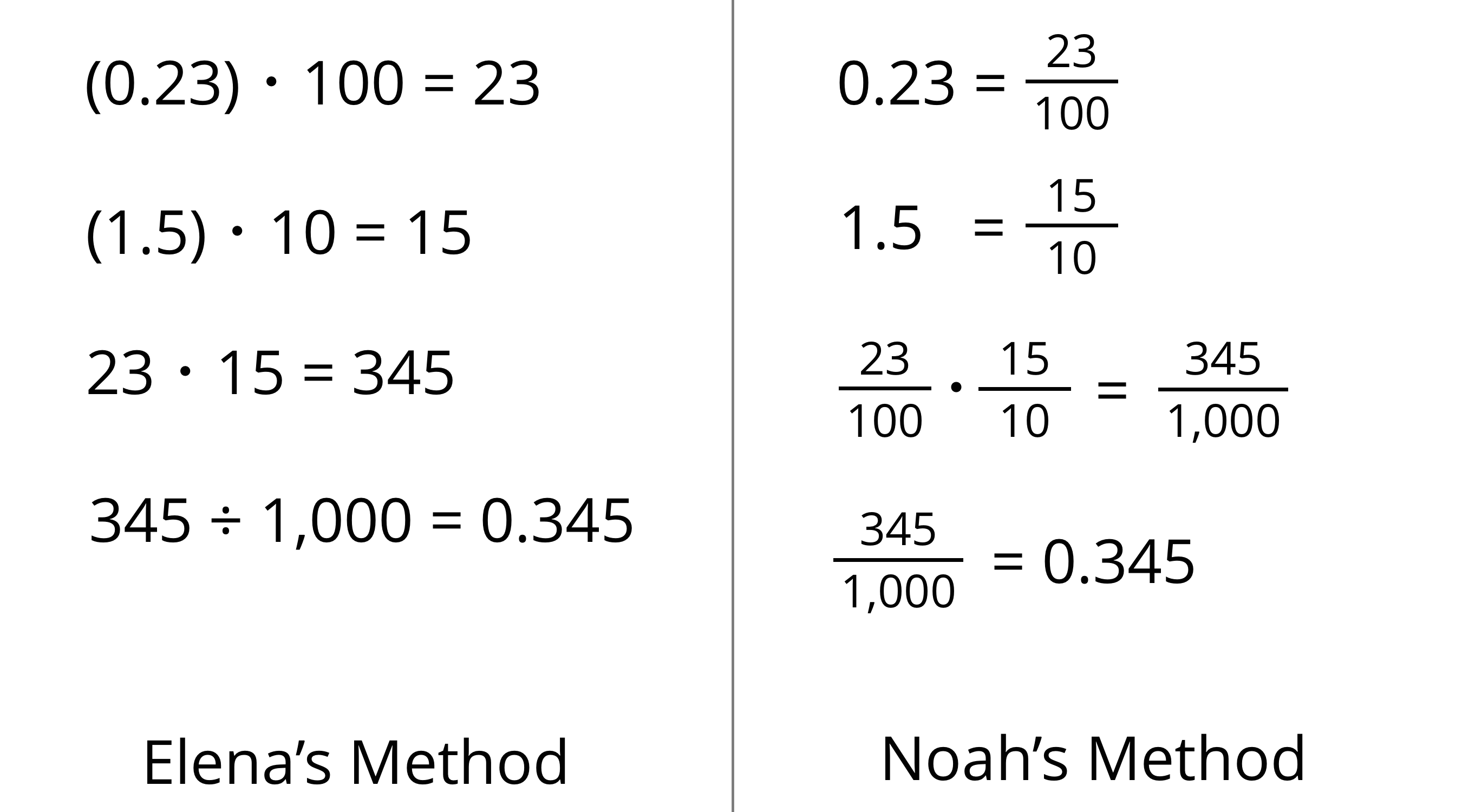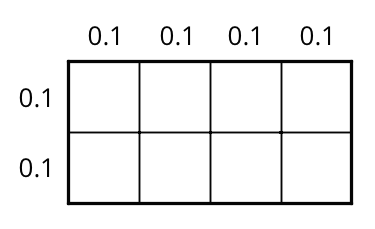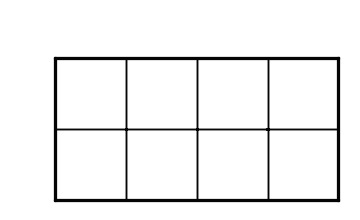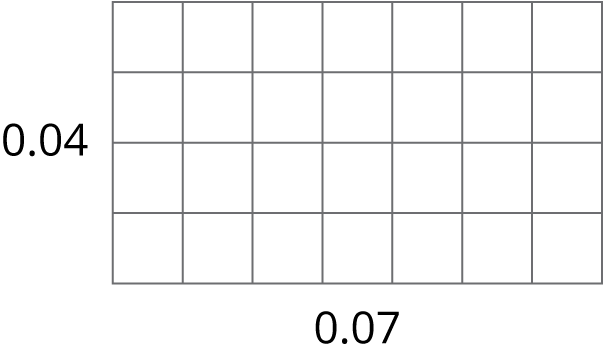6.1: Which One Doesn’t Belong: Products
Which expression doesn’t belong? Explain your reasoning.
A. 2 \boldcdot (0.3)
B. 2 \boldcdot 3 \boldcdot (0.1)
C. 6 \boldcdot (0.1)
D. (0.1) \boldcdot 6
Let’s look at some ways we can represent multiplication of decimals.
Which expression doesn’t belong? Explain your reasoning.
A. 2 \boldcdot (0.3)
B. 2 \boldcdot 3 \boldcdot (0.1)
C. 6 \boldcdot (0.1)
D. (0.1) \boldcdot 6

Analyze the two methods, then discuss these questions with your partner.
Compute each product using the equation 21 \boldcdot 47 = 987 and what you know about fractions, decimals, and place value. Explain or show your reasoning.
In the diagram, the side length of each square is 0.1 unit.

Label the squares with their side lengths so the area of this rectangle represents 40 \boldcdot 20.

Next, use the diagram to help you find (0.04) \boldcdot (0.02). Explain or show your reasoning.

Here are three other ways to calculate a product of two decimals such as (0.04) \boldcdot (0.07).
First, we can multiply each decimal by the same power of 10 to obtain whole-number factors.
Because we multiplied both 0.04 and 0.07 by 100 to get 4 and 7, the product 28 is (100 \boldcdot 100) times the original product, so we need to divide 28 by 10,000.
(0.04) \boldcdot 100 = 4
28\div 10,\!000=0.0028
Third, we can use an area model. The product (0.04) \boldcdot (0.07) can be thought of as the area of a rectangle with side lengths of 0.04 unit and 0.07 unit.

In this diagram, each small square is 0.01 unit by 0.01 unit. Its area, in square units, is therefore \left(\frac{1}{100} \boldcdot \frac{1}{100}\right), which is \frac{1}{10,000}.
Because the rectangle is composed of 28 small squares, its area, in square units, must be: 28 \boldcdot \frac{1}{10,000} = \frac{28}{10,000}=0.0028
All three calculations show that (0.04) \boldcdot (0.07) = 0.0028.